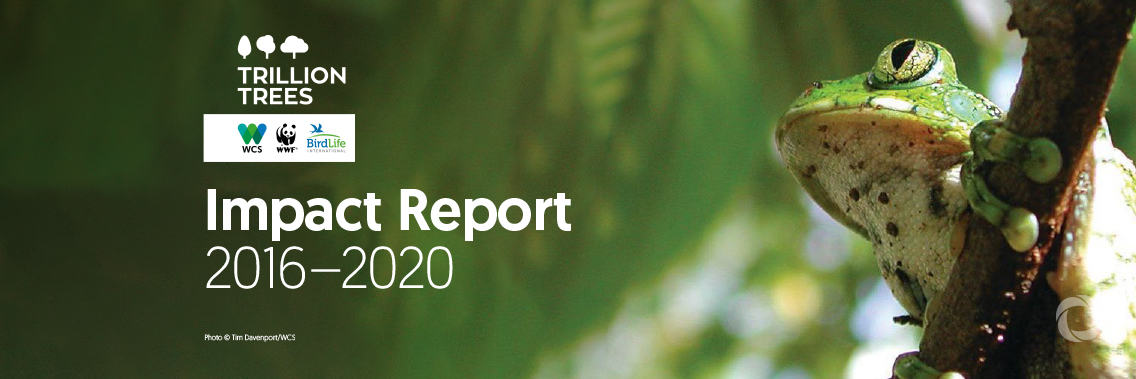Nearly 59 million hectares of forests—an area larger than mainland France— have regrown since 2000, according to a new analysis published on May 11 by Trillion Trees, a joint venture between World Wildlife Fund (WWF), BirdLife International, and the Wildlife Conservation Society (WCS). This area of forest has the potential to store the equivalent of 5.9 gigatons of CO2—more than the annual emissions of the United States.
The study points to the Atlantic Forest in Brazil as one of the success stories for regeneration. An estimated 4.2 million hectares—an area roughly the size of the Netherlands—have regrown there since 2000 through a combination of planned projects to restore the forest, more responsible industry practices, and other factors, including migration trends toward cities. Yet, there is much more to be done to protect and recover this important biome.
“Deforestation is at the center of our climate crisis, and we must do everything we can to halt it,” said Josefina Braña Varela, vice president and deputy lead for forests at WWF. “In addition, the restoration of our natural forests will play an essential role in preserving these critical ecosystems. The analysis provides a positive outlook for natural regeneration—but this growth doesn’t happen without careful planning, increased investment, and strong policies in place that lead to an increase in forest cover.”
In the boreal forests of Mongolia’s northern wilderness, the study suggests that 1.2 million hectares of forest have regenerated in the last 20 years, in part thanks to the work of WWF and increased emphasis on protected areas by the Mongolian government. Other regeneration hot spots include Central Africa and the boreal forests of Canada.
The study is designed to help inform forest restoration plans worldwide, giving a picture of the areas where focusing restoration efforts could be most beneficial. It is part of a two-year research project that involved examining more than 30 years’ worth of satellite imaging data and surveying experts with on-the-ground knowledge of more than 100 sites in 29 different countries. It follows WWF’s map of deforestation fronts, published earlier this year, that showed the alarming extent to which the world is losing forests.
There is more momentum than ever behind forest restoration, including a wave of government pledges. But close examination of these pledges shows that the delivery plans involve very limited expansion of natural forests despite the strong climate and biodiversity benefits they offer. With this new understanding of the potential for natural regeneration at scale, there is cause for rebalancing delivery plans to include more natural forests.
The map has been developed through a rigorous scientific approach, but the researchers acknowledge the limitations of working from remote sensing data and are seeking further input to validate or adjust the map and deepen their understanding of the conditions that led to regeneration.
“This map will be a valuable tool for conservationists, policymakers, and funders to better understand the multiple ways we can work to increase forest cover for the good of the planet,” said John Lotspeich, executive director of Trillion Trees. “The data show the enormous potential of natural habitats to recover when given the chance to do so. But it isn’t an excuse for any of us to wait around for it to happen. Through our partners at BirdLife International, WCS, and WWF, Trillion Trees has worked hard to identify and protect the areas where there is potential for natural regeneration of these precious assets and to learn from our successes to promote natural regeneration elsewhere on an even larger scale.”
The authors of the study warn that encouraging signs of regeneration cannot be taken for granted. Forests across Brazil face significant threats, even the Atlantic Forest—a recognized success story in restoration. Such is the extent of historic deforestation that the area of this unique forest still needs to more than double from currently 12% of its original extent to 30% in order to reach what scientists believe is a minimal threshold for its lasting conservation.
“Even though this is an exploratory effort, it still highlights the potential that enabling and consolidating regeneration has for mitigating climate change and securing its biodiversity benefits,” said Naikoa Aguilar-Amuchastegui, senior director of forest carbon science at WWF and lead of the data analysis team. “However, this remains difficult to map and a lot of additional work lies ahead.”
Primed with more detailed intelligence about regeneration opportunities, Trillion Trees plans to invite local partners and green funders to help facilitate new landscape restoration ventures, focusing on areas offering the maximum benefit for vulnerable ecosystems and local communities.

